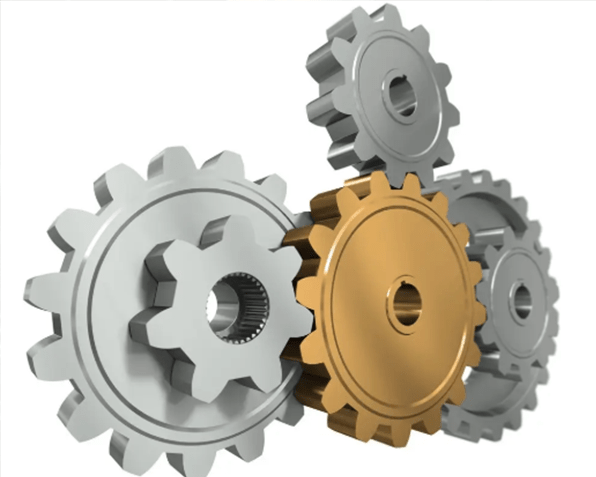
Figure 1: Different types of gearboxes.
The gearbox, also called transmission that can changes the speed of a motor, is a power transmission device. It, through gear meshing of different gears, could convert the revolutions of motors into revolutions required by operating devices, and alter the torque.
The most fundamental definition of a Gear Box is that it is a contained gear train, or a mechanical unit or component consisting of a range of gears integrated within a housing. In fact, its name itself conveys a definition that it is a box containing gears. Basically, gearbox changes the torque and speed between drive (such as motors) and load, whose functions are similar to any gear system.
Types of Gearboxes
Gearbox has different types based on different classification methods.
1.According to usual types: there are cylindrical gearbox, planetary gearbox, and a gearbox that combines various gearboxes.
2.According to the number of transmission stages, there are single-stage gearbox and multi-stage box.
3.According to the configuration of rotation, there are unfolding gearbox, split-flow gearbox, coaxial gearbox and hybrid gearbox, etc.

Figure 2: Planetary gearbox transmission cross section and semi transparent casing.
Features of Gearbox
The gearbox transmission equipment is generally prone to wear, and, therefore, gearbox needs to be made by strict and special manufacturing processes. Take an example, its gear is made of premium low-carbon alloy steel, with high strength, but also smooth surface and high-precision.
Considering the installation and disassembly, gearbox is designed with such features as light weight, small size, easy to disassemble and install.
To operate mechanical facilities stably and reliably, gearbox is required to be stable, durable, and hardwearing. Gearbox is highly efficient when being operated, and could reduce the operating noises as much as possible.
Functions of Gearbox
Functions of Gear Box are as follows:
1.Increase and reduce speed, which is known as variable speed gearbox.
2.Change drive direction. For example, force could be transmitted vertically to another axis of rotation with two sector gears.
3.Change the torque. Under the same power conditions, the faster the gear rotates, the smaller the torque on the shaft is, and vice versa.
4.Clutch function: We can achieve the purpose of separating the engine from the load by separating the two originally meshed gears, such as brakes, clutches, etc.
5.Power distribution. We can use one engine to drive multiple loads with main shaft of gearbox driving subordinate shafts.

Figure 3: Multiple gears serve to change speed.
Application of Gearbox in Wind Power Generator
Gearbox is applied in broad ranges. For example, gearbox is an important mechanical component widely used in wind power generator. Its main function is to transmit the power generated by wind wheels to the generator and make it obtain corresponding rotation speed.
Usually, Rotation speed of wind wheels is low, far from the rotation speed required by generator to generate electricity. It must be realized by speed-increasing effect of the gear pair of gearbox, so gearbox is also called speed-increasing box.
Gearbox, bearing the force from wind wheels and reaction force generated by gears transmission, must have sufficient rigidity to withstand the force and torque, prevent deformation, and ensure transmission quality. The design of gearbox case should be carried out in accordance with requirements of layout arrangement of the wind turbine power transmission, processing and assembly conditions, and easy inspection and maintenance.
With the rapid and thriving development of gearbox industry, an increasing number of industries and different enterprises use gearboxes as well, and more and more enterprises have prospered in gearbox industry.
Related Info
What is a Blend Door Actuator?How to Replace a Blend Door Actuator?
How do Water Level Meters Work?
What is an Actuator?
Pros and Cons of Pneumatic, Electric and Hydraulic Actuators


